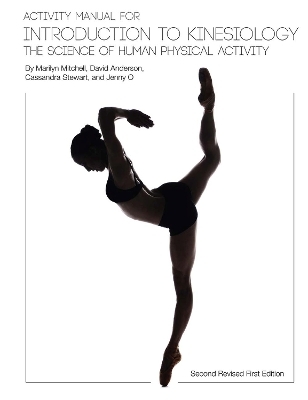
Activity Manual for Introduction to Kinesiology
Cognella, Inc (Verlag)
978-1-62661-449-9 (ISBN)
Used in conjunction with the main textbook, the Activity Manual for Introduction to Kinesiology: The Science of Human Physical Activity provides outstanding, accessible, hands-on application of the concepts of kinesiology.
Teaching kinesiology courses can be challenging given the scope of material across all the sub-fields. Additionally, there is often a lack of resources to provide expensive laboratory equipment for introductory classes. This manual provides instructors with laboratory experiences that involve all the students in the introductory class, as well as activities for individual students in programs that do not offer lab sections. The labs and activities in the manual require minimal and inexpensive equipment.
Many important features of the manual serve to enhance the textbook:
Activities are provided for each chapter
One or more labs are provided for each chapter
All activities and labs have a clearly stated purpose, an introduction, methods/materials, results and discussion questions, and reference sections
All activities and labs have relevant graphics, charts or tables to support learning
Discussion questions stimulate critical thinking and encourage further research
Many of the activities and labs use a cross-disciplinary approach to aid understanding of the material
The extensive range of activities in this manual makes it possible for professors to easily provide numerous opportunities for meaningful application of the study of kinesiology.
Marilyn Mitchell, Ph.D., is a professor in the Department of Kinesiology at San Francisco State University, where she teaches Motor Learning, Neuromotor Control Processes, and Introduction to Kinesiology. Dr. Mitchell earned her Ph.D. in physical education at the University of Wisconsin-Madison with a specialization in Motor Learning and Control. She served as Chair of the Department of Kinesiology at the University of Colorado at Boulder. She has also served as president of the North American Society of Psychology of Sport and Physical Activity. Dr. Mitchell is a fellow in The National Academy of Kinesiology. David Anderson, Ph.D. is a professor in the Department of Kinesiology at San Francisco State University and is the former Chair of the Department. Dr. Anderson earned his Ph.D. at Louisiana State University in the area of Motor Behavior. He has taught Introduction to Kinesiology, Motor Learning, Motor Development, Neuromotor Control Processes, and Sport and Exercise Psychology. Dr. Anderson is a member of the Institute of Human Development at the University of California, Berkeley. He works collaboratively with faculty around the world and participates in a number of professional organizations dedicated to promoting Kinesiology. Dr. Anderson is a Fellow in the National Academy of Kinesiology. Cassandra Stewart, M.Sc. received her Master’s Degree in Kinesiology from San Francisco State University, and is now a full time lecturer in the university's Department of Kinesiology. She has taught the Introduction to Kinesiology Lab, Beginning Weight Training, Becoming a Kinesiologist- GWAR, and Anatomical Kinesiology. Jenny O, Ph.D. is an assistant professor in the Department of Kinesiology at California State University, East Bay. She completed her honors degree in Sport and Physical Health and Education at Laurentian University, her Master’s degree at the University of Windsor, and her Ph.D. at The University of Western Ontario. As an instructor, Dr. O places heavy emphasis on learning consciously-controlled self-regulatory skills which can facilitate consistent elite performance in physical activity and other life performance areas such as school, work, and social relationships.
Preface
Chapter One: Kinesiology: The Emergence of a New Field of Study
Chapter Two: The History of Kinesiology
Chapter Three: Anatomical and Physiological Systems
Chapter Four: Exercise Physiology Foundations
Chapter Five: Biomechanical Foundations
Chapter Six: Motor Control and Motor Learning Foundations
Chapter Seven: Psychological Foundations
Chapter Eight: Developmental Foundations
Chapter Nine: Sociocultural Foundations
Chapter Ten: Epilogue
| Erscheint lt. Verlag | 30.9.2013 |
|---|---|
| Verlagsort | San Diego |
| Sprache | englisch |
| Maße | 215 x 279 mm |
| Gewicht | 525 g |
| Themenwelt | Studium ► 1. Studienabschnitt (Vorklinik) ► Anatomie / Neuroanatomie |
| Studium ► 1. Studienabschnitt (Vorklinik) ► Physiologie | |
| Naturwissenschaften ► Biologie | |
| ISBN-10 | 1-62661-449-0 / 1626614490 |
| ISBN-13 | 978-1-62661-449-9 / 9781626614499 |
| Zustand | Neuware |
| Haben Sie eine Frage zum Produkt? |
aus dem Bereich


